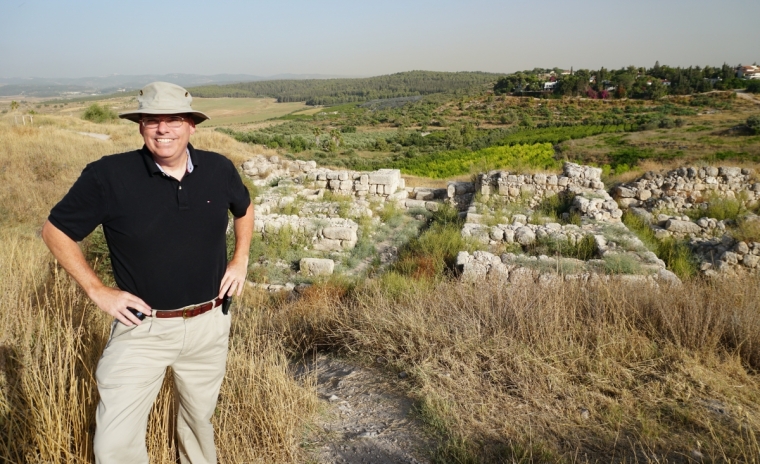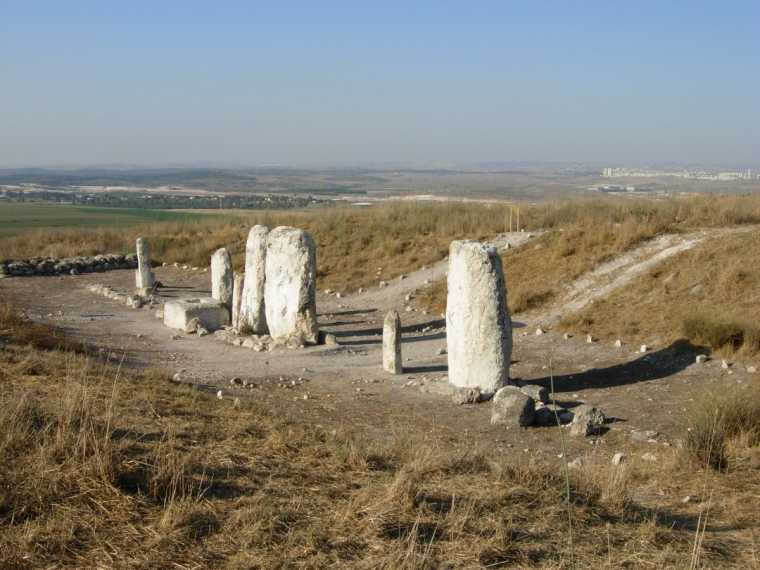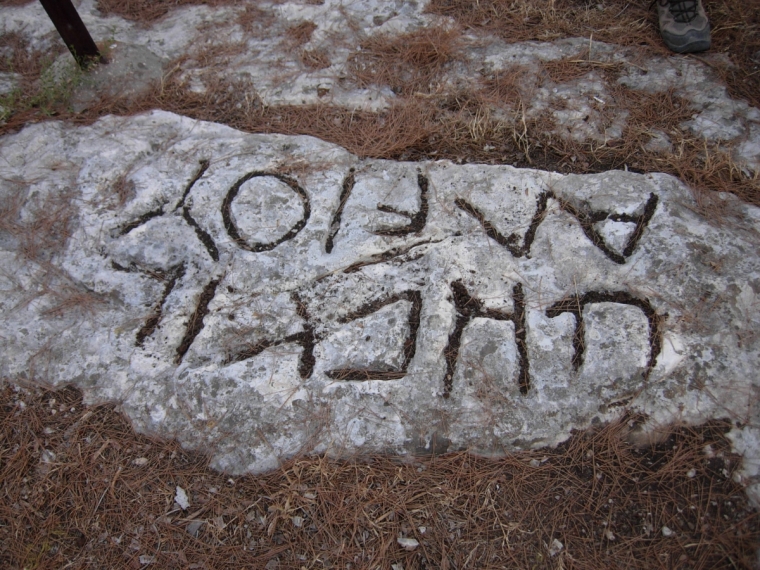THROUGH THE BIBLE: Where God threw hail stones down on the Canaanites

Christian Examiner continues a new series which allows readers to walk with Dr. Eric Mitchell, Associate Professor of Old Testament & Biblical Archaeology at Southwestern Baptist Theological Seminary, through some of the most important sites in the Bible. Mitchell directs the archaeological survey at Tel Gezer, an important Old Testament site. Mitchell's journal entries will help readers visualize important sites like Gezer, the places where Jesus walked, and the valley where David killed the Philistine Goliath.
TEL GEZER, Israel (Christian Examiner) – At this point in my life standing anywhere on or near the ancient city of Gezer feels like home. My students and I have walked many of the fields, slopes, and orchards around the ancient city numerous times.
I've been to Israel 19 times in my career. For the past nine years, I have directed the Tel Gezer Regional Survey Project; we field-walk the area within 1 km of Gezer in order to better understand how the ancient inhabitants used their landscape.
We find boundary-stone inscriptions, cisterns, wine/olive presses, tombs, water sources, quarries, flint worksites, walls, and other important items. We plan to analyze and publish all our data in a catalog and in articles — also placing everything on a map with GPS coordinates.

Tel Gezer is located just south of Highway 1 halfway between Tel Aviv and Jerusalem. Ancient Gezer was an important city occupied by Canaanites from the Early Bronze Age (about 3500 B.C.) through the Iron Age.
One of the largest city gates in Israel (made of mudbrick) is located at Gezer and dated to the Middle Bronze Age (mid-second millennium B.C.). There is a water system just inside this earlier gate from the same period, hewn from limestone down to the water table.
Dan Warner at New Orleans Baptist Theological Seminary directs an associated project, digging at the MB gate and in this water system. In antiquity, Gezer is mentioned in the annals of the Egyptian Pharaoh, Thutmoses III (mid-15th century B.C.), in the Amarna letters (14th century B.C., and in the victory stele (a monument) of the Egyptian Pharaoh Merneptah (about 1207 B.C.).

Why is this place important in the study of the Bible? Several important events took place right here!
Gezer was (and still is) an important site because it is located in the Aijalon Valley and guards both the international coastal road (Via Maris) and the central approach to the Benjamite Plateau and, thus, Jerusalem.
When Joshua fought the Canaanite kings at Gibeon on the central Benjamite Plateau just north of Jerusalem, he stood at Gibeon and looked west over the Aijalon valley and prayed, "O sun, stand still at Gibeon, And O moon in the valley of Aijalon" (Josh 10:12).
Israel chased the Canaanites down the ridge called the Ascent of Beth Horon through the Aijalon Valley and south past Gezer, and all the while God was throwing hailstones down on the Canaanites.

Joshua's prayer had to take place in the morning, because it is only in the morning that the sun is overhead and the moon is still present in the western sky. The Bible says that the sun stood still for almost a day and Israel defeated all of these kings.
While Joshua soon after defeated the king of Gezer in a battle near Lachish (Joshua 10:33), he did not conquer the city of Gezer itself.
Later, when Solomon became king, he married the daughter of Pharaoh (likely Pharaoh Siamun). This pharaoh conquered Gezer and gave it as a dowry to Solomon for pharaoh's daughter. From that time forward, Gezer belonged to Israel, but it was sacked after Solomon's death by Pharaoh Shishak (around 925 B.C.).
In 1908, excavators found an important Hebrew inscription on a small stone scribal practice tablet from the time of Solomon. Called the "Gezer Calendar," it lists out the months of the year according to agricultural activities.
The inscription illuminates issues of ancient Israelite literacy, the development of the Hebrew script, and the agricultural economy of Israel.
Also, in the mid-eighth century B.C., a crisis arose for Judah where Pekah (king of Samaria/northern Israel) and Rezin (king of Damascus) wanted to depose Ahaz (king of Judah) and replace him with the son of the king of Tyre.
This is when Isaiah went out to meet Ahaz in Jerusalem and told him to ask for a sign from God that He would deliver Jerusalem from these kings (see Isaiah 7). But Ahaz would not ask for a sign!
In response, God promised the sign of a child to be born. He was to be called "Immanuel" (which means "God with us").
Instead of appealing to God, Ahaz offered tribute to the Assyrian King Tiglath-Pilesar III, asking him to come and deliver him. Judah became a vassal to Assyria in the process, and Tiglath-Pilesar came and conquered Damascus, Samaria, and parts of Judah.
He besieged and conquered Gezer around 733 BC. A relief of this siege of Gezer was found at an Assyrian Royal palace in Nimrud (modern Iraq).

During the inter-testamental period, Gezer became an important city in the time of the Hasmonean Kingdom (during the time of the Maccabees, from 166 to 63 B.C.). It was during the Roman occupation, when Gezer was likely a private estate, that's in boundary inscriptions were set in place.
What an important city Gezer was.
Dr. Eric Mitchell covers Bible Backgrounds for the Christian Examiner. He is Associate professor of Old Testament & Archaeology at Southwestern Baptist Theological Seminary in Fort Worth, Texas, and directs the Tel Gezer Regional Survey Project in Israel.